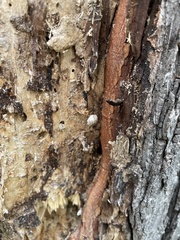During our nature hike in Mount Royal Park, Montreal, QC, I came across an intriguing species of wildflower. I later identified this plant to be Symphyotrichum cordifolium, which is better known as the Common Blue Wood Aster. Using OneZoom, I examined its phylogenetic placement and found that it belongs to the Asteraceae family (the daisy family). The branches extending from this category on OneZoom are multitudinous, one of which is the genus Symphyotrichum. This particular species of aster is most closely related to the Smooth White Aster (Symphyotrichum porteri), with which it shares a common ancestor.
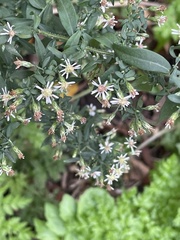
Fig.1 The Common Blue Wood Aster plant I observed.
Due to the large of variety of plants I observed in Mount Royal Park (including shrubs, wildflowers, and trees), it is difficult to come to the conclusion that they all possess a single common adaptation. However, I noticed that all of the plants either had numerous leaves that were relatively small with respect to the overall size of the plant, or had a few leaves that were excessively large comparatively. Both of these arrangements of leaves would maximize the surface area of the plant to optimize photosynthesis (a greater surface would mean a greater amount of energy obtained from exposure to sunlight, more stoma for gas exchange, etc).
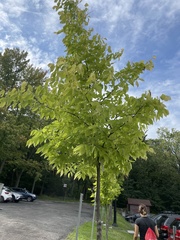
Fig.2 A tree with lots of small leaves.
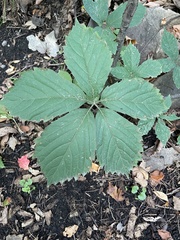
Fig. 3 A plant with few leaves, but have a very large surface area.
The Clearweed plant I observed (genus Pilea, exact species unidentified) had particularly waxy leaves. This adaptation would allow the plant to retain more water (preventing water loss with a hydrophobic coating), which usually is most important for plants in desert environments. I found this particular plant growing out from under the staircase leading up to the main trails in Mount Royal Park, where the surrounding environment seemed rather dry and received little sunlight. I think the plant’s waxy leaves makes it uniquely positioned as a species to survive in parts of its terrestrial environment that would otherwise be uninhabitable.
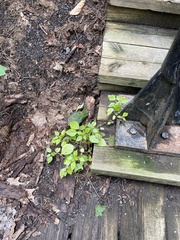
Fig.4 The Clearweed plant at the base of the staircase.
-Sophia Cottrill
